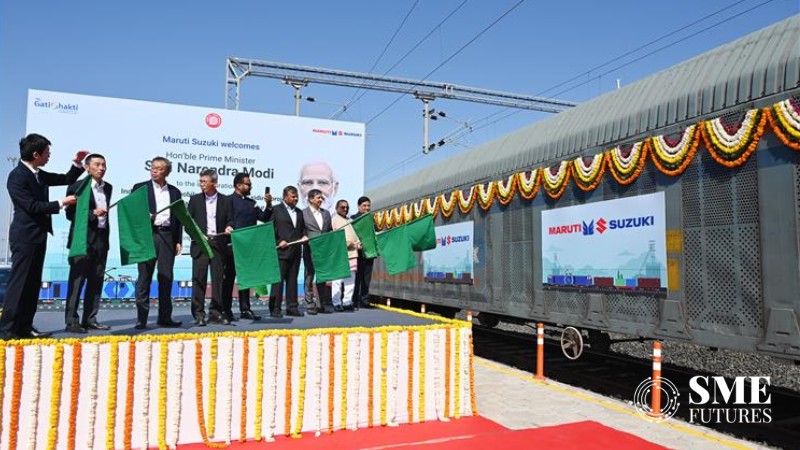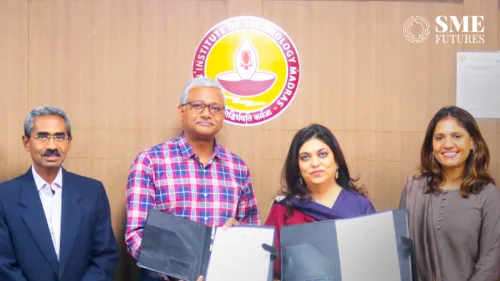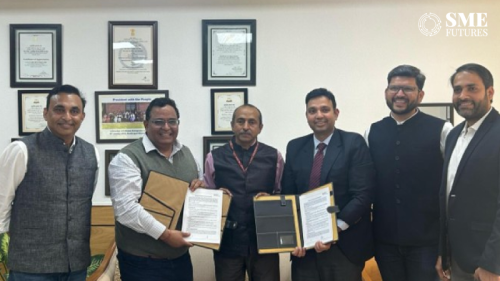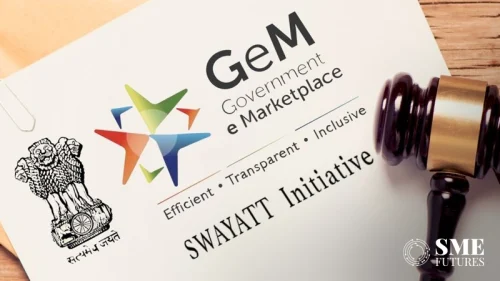Prime Minister Narendra Modi on Tuesday inaugurated India’s first automobile in-plant railway siding project of Maruti Suzuki (MSIL) at its plant at Hansalpur in Gujarat’s Mehsana district virtually from a function here.
PM Modi, who visited Gujarat on Tuesday, inaugurated and laid the foundation stone of Rs 85,000 crore railway projects, including the launch of 10 new Vande Bharat trains, from Sabarmati area of Ahmedabad in Gujarat after visiting the Dedicated Freight Corridor’s (DFC) Operation Control Centre here.
The MSIL’s in-plant railway siding project was also inaugurated during the event.
The project has been developed under the Centre’s PM Gati Shakti mission in partnership with the Gujarat government, Indian Railways and MSIL at a cost of Rs 976 crore, MSIL’s Executive Officer, Corporate Affairs, Rahul Bharti said.
“It is for the first time in India that an in-plant railway siding for any automobile company has happened. This is the excellence of the Gati Shakti programme,” Bharti told media persons here.
The project has been developed by a special purpose vehicle – Bahucharaji Rail Corporation Limited (BRCL) – set up with Gujarat Railway Infrastructure Development Corporation (GRIDE), Gujarat Industrial Development Corporation (GIDC) and MSIL as partners with 49 per cent, 29 per cent and 26 per cent equities each respectively.
GRIDE is a joint venture between the Gujarat government and the Ministry of Railways.
The railway line within the Bahucharaji plant is developed entirely by Maruti Suzuki at a cost of Rs 105 crore, Bharti said.
The project eliminates an annual 50,000 truck trips for MSIL, with the automobile major planning to increase dispatches of finished cars by railway from 26 per cent currently to 40 per cent annually at its full capacity, he said.
“The project will save 50,000 truck trips, 35 million litres of fuel used in trucks per annum, and cut down on 1,650 tonnes per annum carbon emission. Logistics can be a good way of reducing our carbon emission, moving us towards carbon neutrality,” Bharti said.
“Converting the dispatch from road to rail will benefit everyone as it reduces road congestion. A truck does an average trip of 1,600 km, and one train replaces 40 such trucks. One route of the train thereby helps us effectively eliminate 64,000 km of a truck running on the road,” he said.
The railway sliding has a capacity to dispatch 3,00,000 cars per annum with a present parking capacity of 800 cars expandable up to 3,000 cars, he said.
Till February, Maruti Suzuki has dispatched around 18 lakh cars by railways. During the current fiscal till February, 4.09 lakh cars have been dispatched by the railways, he said.
“Our penetration of the railway as a mode of dispatch is the highest among all car manufacturers in the country. We have done more than 21 per cent of dispatches this year, and we want to keep increasing it further, the company’s executive officer said.
“We want to keep increasing the share of railways in our finished goods dispatched from the factory to either the dealers in India or to ship for exports. Our exports are also growing, and the company now exports 42 per cent of cars from India. It will increase drastically in the future,” he said.
Giving details of the timeline of the project, Bharti said that G-RIDE gave its formal approval in March 2017, after which the company’s internal board approved it in January 2019, and construction began in May 2020.











